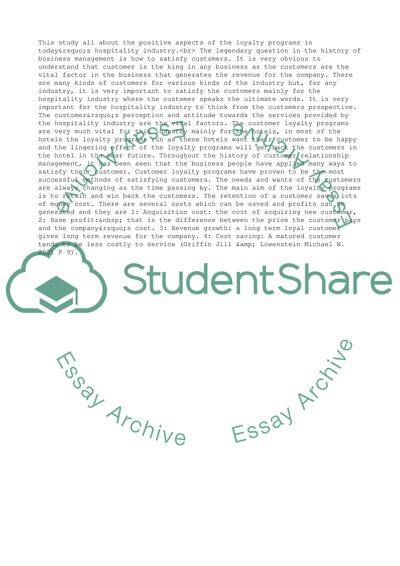Cite this document
(Impact of Customer Loyalty Program on Customer Perception and Attitude Research Proposal, n.d.)
Impact of Customer Loyalty Program on Customer Perception and Attitude Research Proposal. Retrieved from https://studentshare.org/management/1569926-impact-of-customer-loyalty-programme-on-customer-perception-and-attitude-towards-hospitality-brands
Impact of Customer Loyalty Program on Customer Perception and Attitude Research Proposal. Retrieved from https://studentshare.org/management/1569926-impact-of-customer-loyalty-programme-on-customer-perception-and-attitude-towards-hospitality-brands
(Impact of Customer Loyalty Program on Customer Perception and Attitude Research Proposal)
Impact of Customer Loyalty Program on Customer Perception and Attitude Research Proposal. https://studentshare.org/management/1569926-impact-of-customer-loyalty-programme-on-customer-perception-and-attitude-towards-hospitality-brands.
Impact of Customer Loyalty Program on Customer Perception and Attitude Research Proposal. https://studentshare.org/management/1569926-impact-of-customer-loyalty-programme-on-customer-perception-and-attitude-towards-hospitality-brands.
“Impact of Customer Loyalty Program on Customer Perception and Attitude Research Proposal”, n.d. https://studentshare.org/management/1569926-impact-of-customer-loyalty-programme-on-customer-perception-and-attitude-towards-hospitality-brands.


